






 |
|||||||
 |
 |
 |
 |
 |
|||
 |
|||||||
|
Sherwood S7700 Tube Receiver Sherwood is one of those names in Vintage audio that most people have heard, but that is not held in quite the same reverence as Scott or McIntosh or Eico. Sherwood flies under the radar as they say. A quick look online at their 1960s tube receivers reveals that these are actually quite well made and serious units with a Jetsons-like mid-century styling that is all their own. You can just imagine Jackie O dialing in the rock and roll station out at Hyannis Port and turning the loudness dial all the way up! After selling my Scott 299C a while back, I found myself missing the vintage receiver and its golden tone with voice, the classic look and the wonderful antique-ness of the whole thing. So I went Sherwood hunting. One big thing to consider about buying a vintage receiver is restoration. ALL of these units will need some work to safely operate if coming straight out of decades at the back of a closet or from under the bed. At the very least, the selenium rectifier will need to be replaced and coupling caps will need to be checked (and likely replaced). Then there are the can capacitors, some of which are spendy now, as well as tons of resistors and other parts to be tested and replaced if out of spec. Tubes might need to be replaced of course, and some of these old receivers used tubes that are quite hard to find now, are getting expensive, and that new versions of are too large to fit the tight spaces on the amp. There is also a school of thought, that I agree with, that holds that new parts can change the "classic" sound of the amplifier. Some feel that the restoration should be with period correct parts like NOS resistors, etc. Dont take the Sherwood out of the Sherwood, so to say. There are lots of details about all of this elsewhere from far more knowledgeable folks, suffice to say that some research is in order. So back to Sherwood, which has a few problems in this regard. Namely, the engineers at Sherwood made a very compact and tight fitting unit that is reported to be quite a pain to work in. So restoring a Sherwood has a reputation for being a difficult task compared to some other choices. As a result, finding a well-restored Sherwood is harder. But after a false start or two I lucked out with one (and a fairly rare model at that) on the local Craigslist. After getting it home and hooked up: wow this amp is dead quiet and sounds very good! These old receivers have a lot to offer for a reasonable cost. They sound good, they are flexible in that there is a preamp with some options, and there is often an FM tuner as well as a tubed phono stage. Be warned that the input jacks are always small and tightly placed on these old tube receivers. The same for speaker connections, its just a screw panel. Too bad for all of those audiophile cables! So how does the Sherwood S7700 sound in my space? Its got the “vintage” deep tone down pat, it plays very loud without breaking a sweat and it’s got a great soundstage with nice placement and wonderful imaging. In fact, the imaging on this one really surprised and impressed me. In memory comparison, this Sherwood trounces the Scott 299C in fidelity. Style is another matter, but the Sherwood’s look is really growing on me. The only thing I can say negative here is that it takes a bit of volume for this amplifier to open up. Its not a late night amp for low level listening, the whole thing collapses, which was not the case with the Scott 299C. Once you pass 9 on the dial though its like the burner comes on and everything opens up, but at that point its got some volume to it. As this is the only Sherwood I've ever heard, I dont know if that is the case with all of them or not. There is NO HUM at all with this S7700 though, which is certainly a nice feature for older gear like this. Overall, this Sherwood (and vintage tube in general) is impressive, and if you can find one that's been restored it’s certainly worth your time. |
||||||||
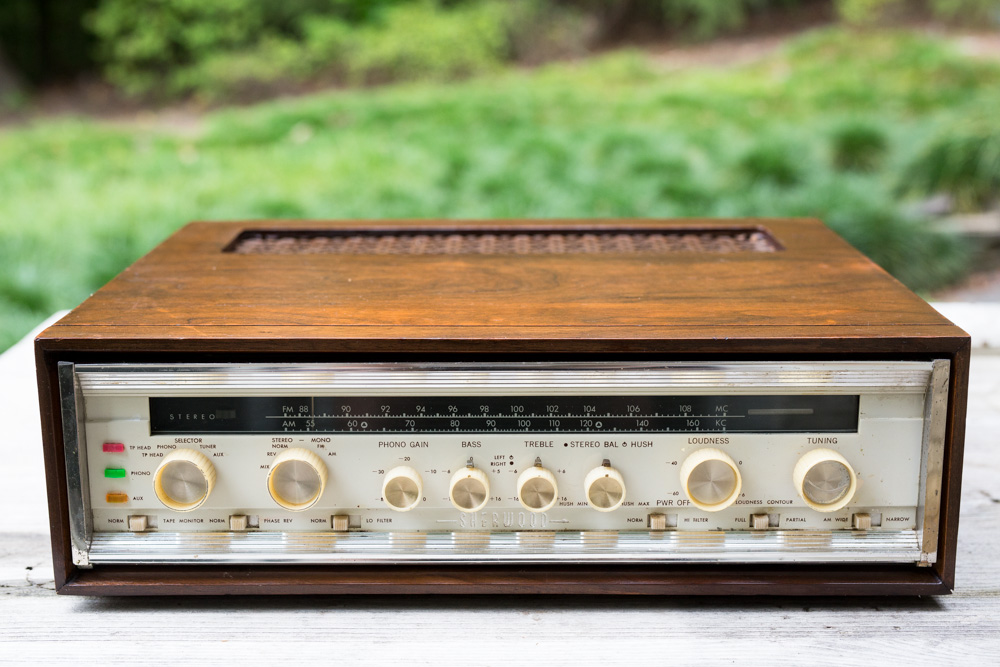
|
||||||||

|
||||||||
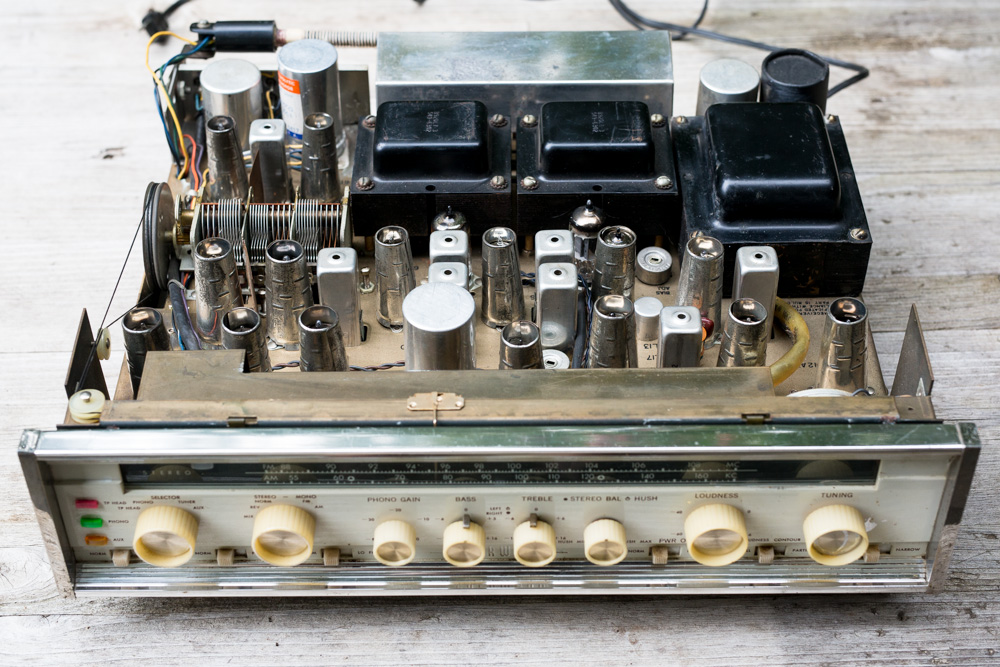
|
||||||||

|
||||||||

|
||||||||

|
||||||||
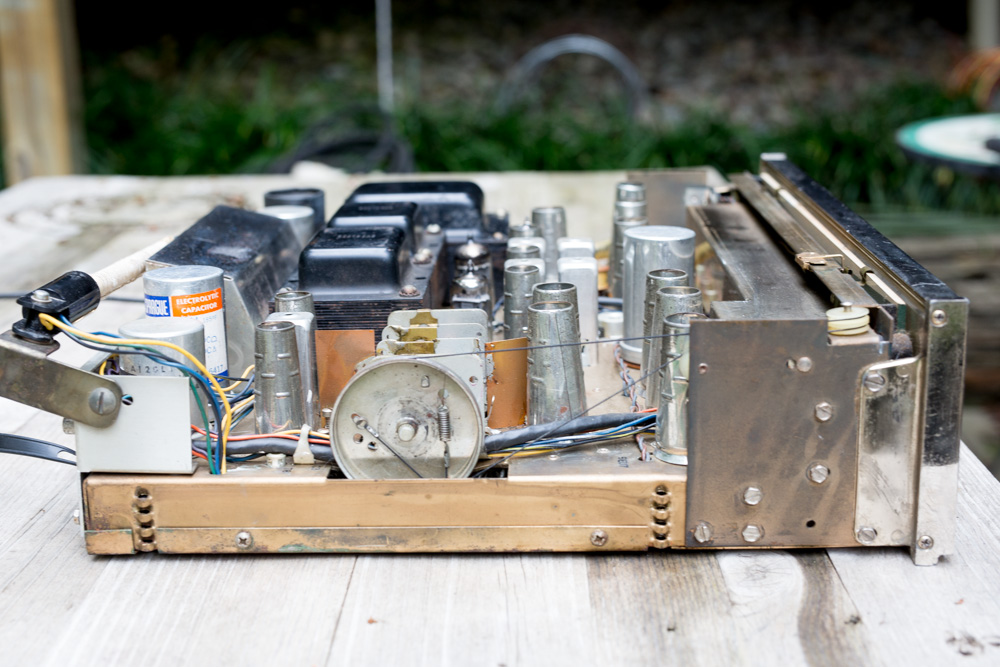
|
||||||||

|
||||||||
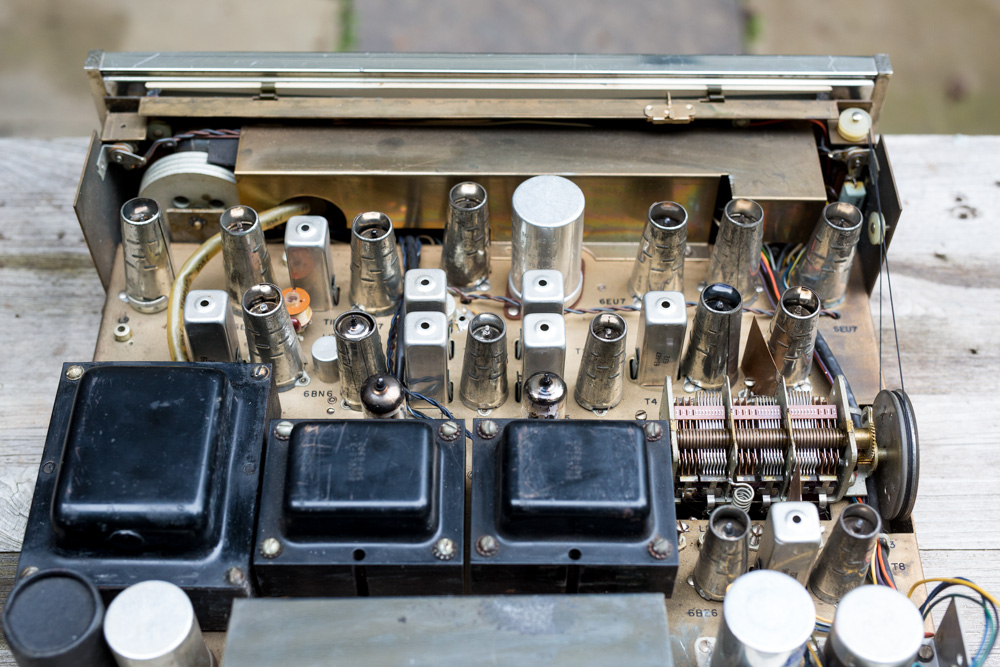
|
||||||||

|
||||||||
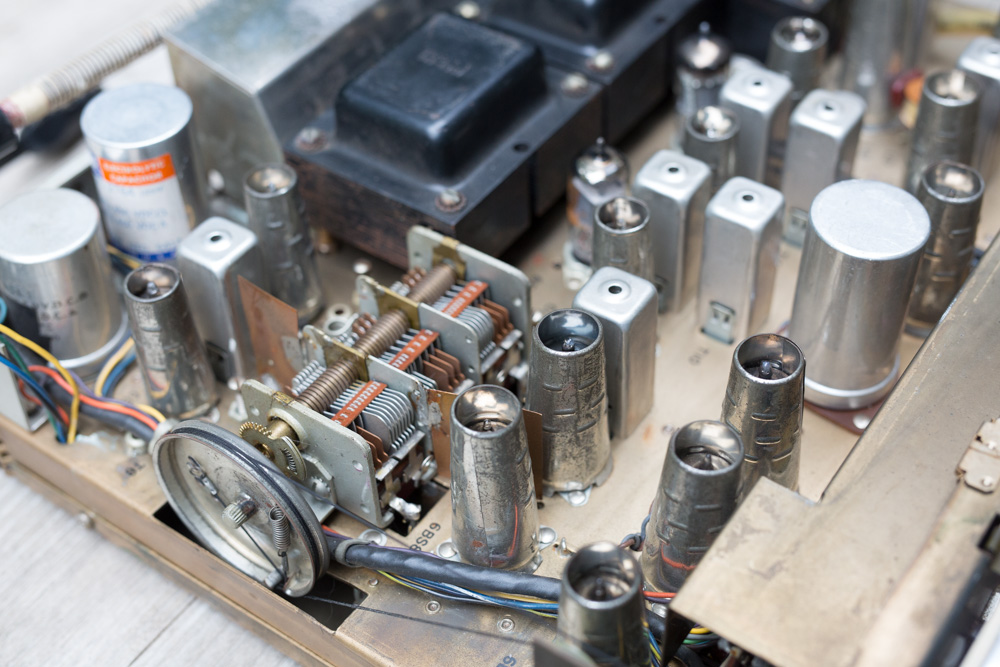
|
||||||||

|
||||||||

|
||||||||

|
||||||||
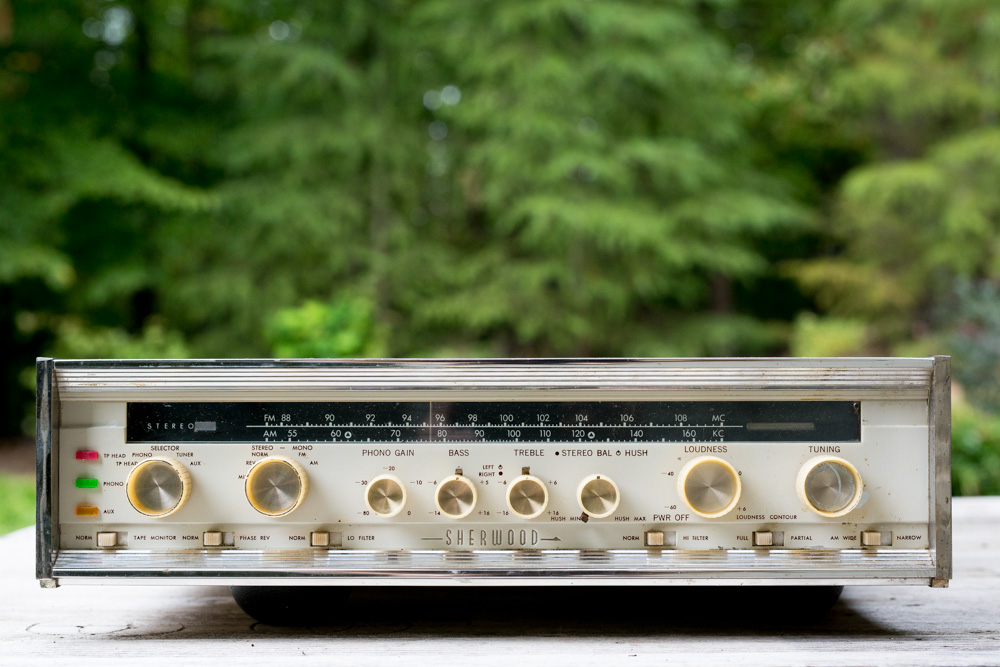
|
||||||||

|
||||||||
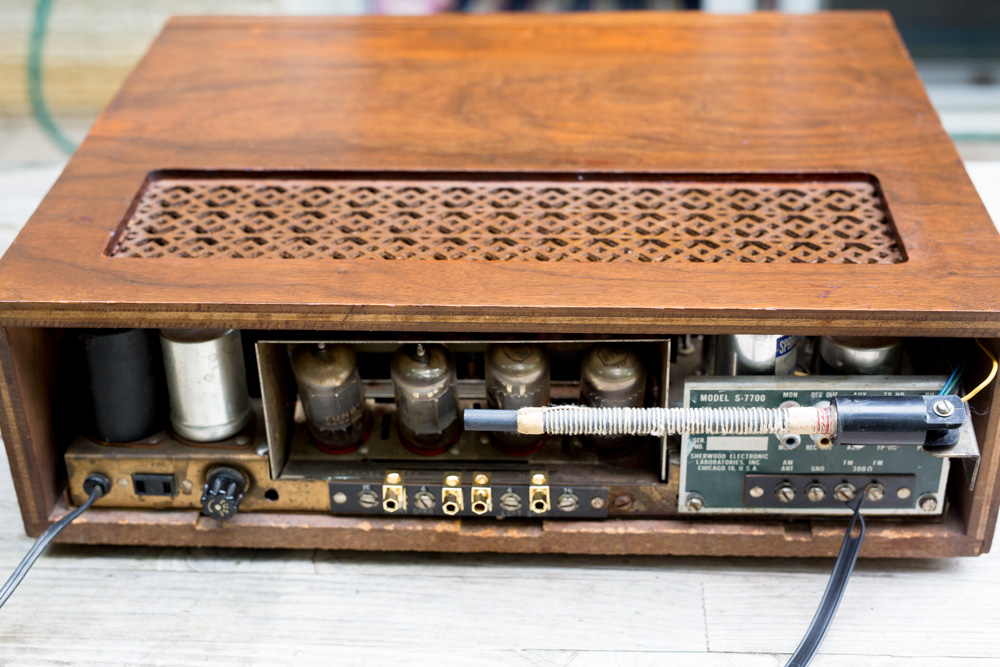
|
||||||||

|
||||||||

|
||||||||

|
||||||||
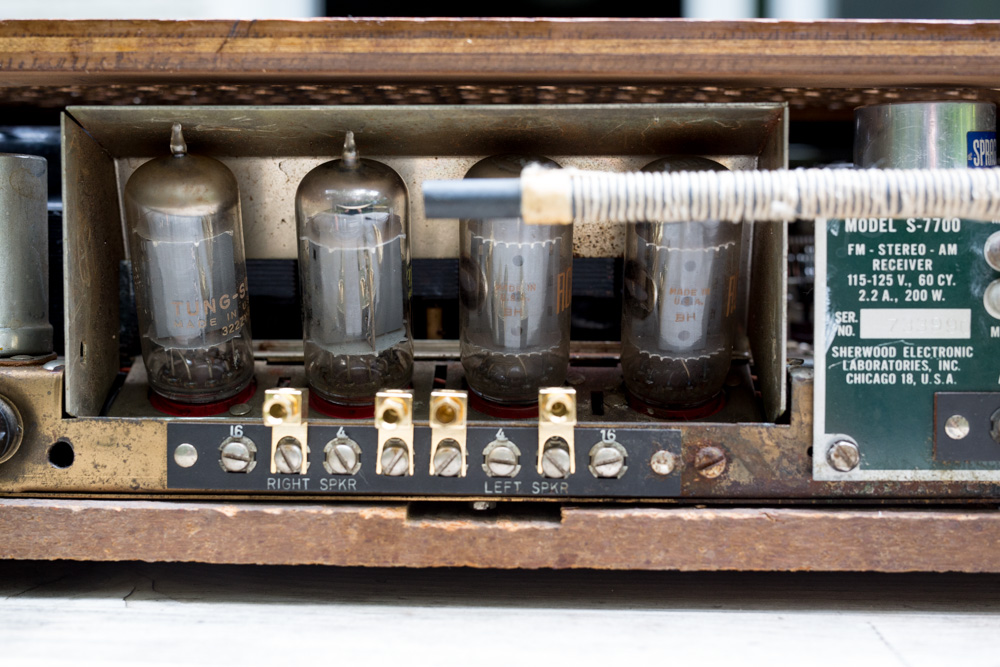
|
||||||||
|
Sherwood used the 7868 power tube in this amplifier. These are still available in NOS but prices are rising. Electro Harmonix makes a new version of the tube, but the pins are slightly thicker, which means inserting the new tubes is a little tough initially, and once in, going back to vintage tubes is not an option without re-tensioning the sockets. At least the new tubes have enough space to fit here, which is not always the case. Considerations like this are important to take into account when buying a tube receiver. |
 |
|||||||
 |
 |
 |
 |
 |
|||
 |
|||||||
 |
|||||||